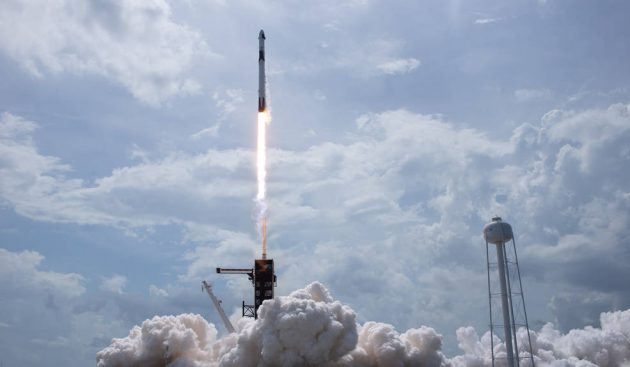Nasa and SpaceX made history by returning US astronauts from US soil to low-Earth orbit for the first time in nine years. It also marked the beginning of “taxi” rides to the space station, where commercial spaceflight enters a new phase. Astronauts Bob Behnken and Doug Hurley are now on their way to the International Space Station, It’s the first time since the retirement of the shuttles nine years ago that an American crew has made the journey from US territory.

Doug Hurley and Bob Behnken are not only trialling a new capsule system, they are also initiating a new business model for Nasa.
The agency will no longer own the vehicles it uses but merely purchase the “taxi” service offered by SpaceX.
It’s hoped companies other than tech billionaire Elon Musk’s SpaceX outfit will come in to expand the market. The aerospace giant Boeing already has a contract with Nasa to do so.
Mr Musk himself said he was overcome with emotion watching his hardware take the astronauts to orbit.
“I think this is something that should get people right in the heart, of anyone that has the spirit of exploration. And the US is the distillation of the spirit of exploration,” he told reporters.
The new capability the CEO is offering will end the reliance of Nasa on Russian rockets and capsules to get its people to the International Space Station (ISS).
It was a point picked up on by President Donald Trump, who came to Florida to watch the launch.
“Past leaders put the US at the mercy of foreign nations to send our astronauts into orbit. Not anymore,” he said. “Today we once again proudly launched American astronauts on American rockets – the best in the world – from right here on American soil.”
Hurley’s and Behnken’s Dragon ship left Earth atop its Falcon-9 rocket precisely on time – at 15:22 EDT (19:22 GMT / 20:22 BST).
Meteorologists had forecast only a 50:50 chance of favourable conditions around Florida’s Kennedy Space Center at lift-off, but, as luck would have it, the weather window stayed open and the SpaceX controllers grabbed their opportunity.
The Falcon soared off the spaceport’s famous 39A pad to head northeast out over the Atlantic. After two-and-a-half minutes, the lower-stage of the vehicle had separated to return to a drone ship at sea. And after a further six minutes, the crew were safely inserted into orbit.
Hurley and Behnken are set to arrive at the ISS on Sunday.
They’ll use some of the intervening hours to test equipment and procedures in their capsule, including doing some manual flying.
Although the Dragon capsule is a fully automated vehicle capable of finding its own way to the ISS, the crew needs to prepare for all eventualities and that means knowing exactly how the ship will behave in their hands.
Uniquely, the Dragon has no control stick; all flight commands must be entered via a touchscreen panel.
One of their first tasks in orbit was simply to name their ship – in the tradition of past US spacefarers, all the way back to the Mercury programme. Radioing down to Earth, they announced it would be called Endeavour.
Doug Hurley said: “We chose Endeavour for a few reasons: One, because of this incredible endeavour that Nasa, SpaceX and the US have been on since the end of the shuttle programme back in 2011. The other reason is a little more personal to Bob and I. We both had our first flights on shuttle Endeavour and it just meant so much to us to carry on that name.”
Endeavour was the ship commanded by British explorer James Cook on his voyage to Australia in the late 18th Century.
